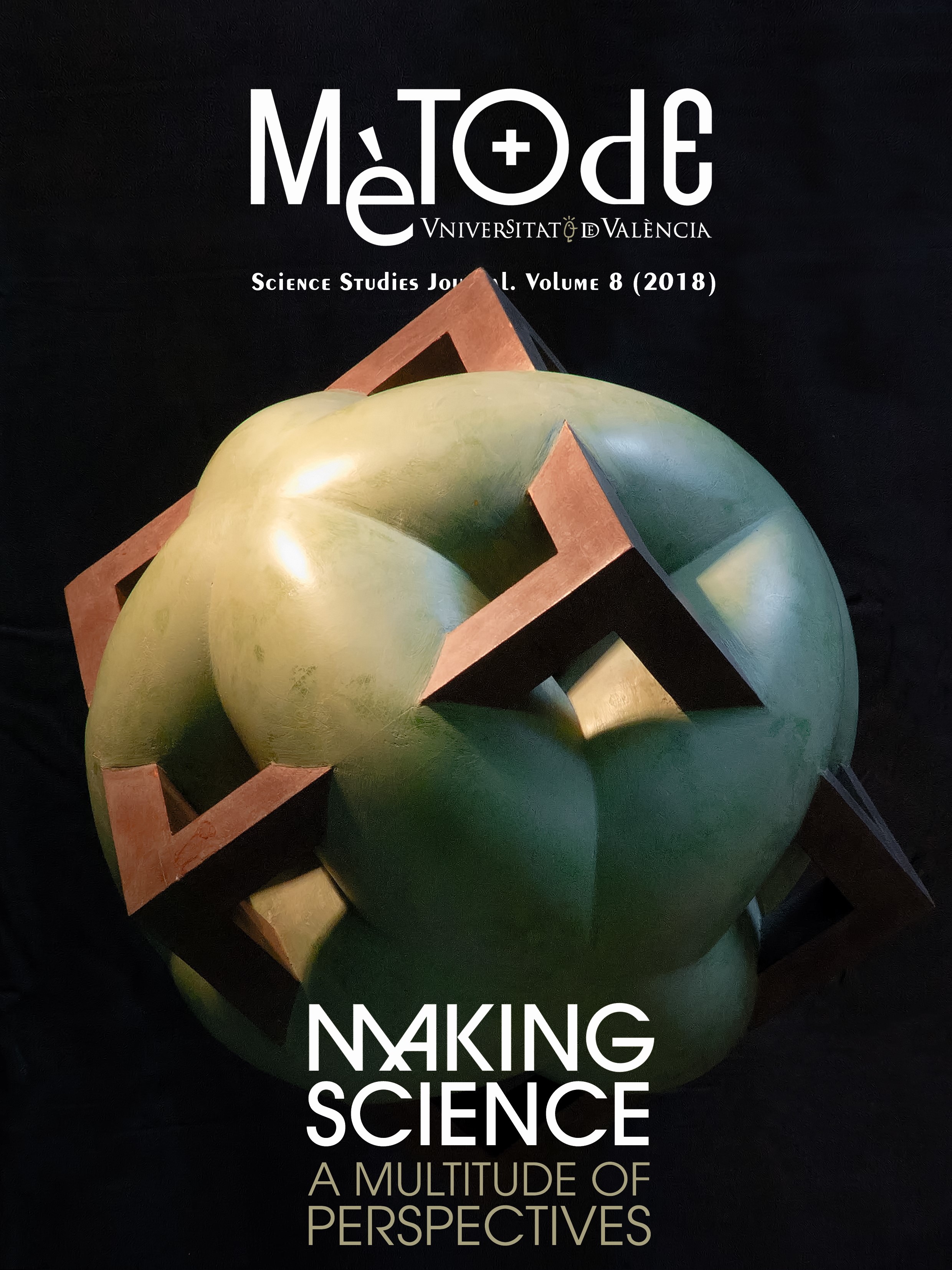Pseudociencia y mala ciencia en biomedicina: Análisis de evidencias, riesgos para la salud y difusión mediática
DOI:
https://doi.org/10.7203/metode.8.10019Palabras clave:
pseudociencia, mala ciencia, biomedicina, medicinas complementarias y alternativas, comunicación científica Resumen
Resumen
La pseudociencia (falsa ciencia) y la ciencia basada en estudios defectuosos y sesgados (mala ciencia) producen conocimiento falso o incierto, sin pruebas o con evidencias de baja calidad. Ambas representan un riesgo para la salud: las terapias basadas en pseudociencia porque pueden reemplazar o retrasar los tratamientos convencionales y la biomedicina de baja calidad porque propicia intervenciones médicas que pueden ser peligrosas. En la prensa, las terapias alternativas tienen menor presencia que las investigaciones de baja calidad, mientras el encuadre suele ser negativo para las primeras y positivo para las segundas. Ambas precisan estudios más completos y rigurosos para comprender mejor sus efectos negativos sobre el pensamiento crítico, la economía y la toma de decisiones que afectan a la salud.
 Descargas
Descargas
 Citas
Citas
Angell, M., & Kassirer, J. P. (1998). Alternative medicine: The risks of untested and unregulated remedies. The New England Journal of Medicine, 339(12), 839–841. doi: 10.1056/NEJM199809173391210
Baker, M. (2016). 1,500 scientists lift the lid on reproducibility. Nature, 533(7604), 452–454. doi: 10.1038/533452a
Bauer, M. (1998). The medicalization of science news: From the “rocket-scalpel” to the “gene-meteorite” complex. Social Science Information, 37(4), 731–751. doi: 10.1177/053901898037004009
BMJ Publishing Group Limited. (2017). What conclusions has Clinical Evidence drawn about what works, what doesn’t based on randomised controlled trial evidence? Retrieved on 4 September 2017 from http://clinicalevidence.bmj.com/x/set/static/cms/efficacy-categorisations.html
Camí, J., Méndez-Vásquez, R. I., & Suñén-Pinyol, E. (2008). Evolución de la productividad científica de España en biomedicina (1981-2006). Redes, 10, 24–29. Retrieved from https://www.medicamentos-innovadores.org/sites/default/files/medinnovadores/Espa%C3%B1ol/Publicaciones/Revista%20Redes/Marzo%202008/REDES_10.pdf
Chalmers, I., & Glasziou, P. (2009). Avoidable waste in the production and reporting of research evidence. The Lancet, 374(9683), 86–89. doi: 10.1016/S0140-6736(09)60329-9
Cortiñas-Rovira, S., Alonso-Marcos, F., Pont-Sorribes, C., & Escribà-Sales, E. (2015). Science journalists’ perceptions and attitudes to pseudoscience in Spain. Public Understanding of Science, 24(4), 450–465. doi: 10.1177/0963662514558991
Djulbegovic, B., & Hozo, I. (2007). When should potentially false research findings be considered acceptable? PLoS Medicine, 4(2), 0211–0217. doi: 10.1371/journal.pmed.0040026
Dumas-Mallet, E., Smith, A., Boraud, T., & Gonon, F. (2017). Poor replication validity of biomedical association studies reported by newspapers. PLoS ONE, 12(2), e0172650. doi: 10.1371/journal.pone.0172650
Escribà-Sales, E., Cortiñas Rovira, S., & Alonso-Marcos, F. (2015). La pseudociencia en los medios de comunicación: Estudio de caso del tratamiento de la homeopatía en la prensa española y británica durante el período 2009-2014. Panace@, 16(42), 177–183.
Goldacre, B. (2009). Bad science. London: Harper Perennial.
Gonon, F., Konsman, J. P., Cohen, D., & Boraud, T. (2012). Why most biomedical findings echoed by newspapers turn out to be false: The case of attention deficit hyperactivity disorder. PLoS ONE, 7(9), e44275. doi: 10.1371/journal.pone.0044275
Goodman, S., & Greenland, S. (2007). Why most published research findings are false: Problems in the analysis. PLoS Medicine, 4(4), e168. doi: 10.1371/journal.pmed.0040168
Guyatt, G. H., Oxman, A. D., Vist, G. E., Kunz, R., Falck-Ytter, Y., Alonso-Coello, P., & Schünemann, H. J. (2008). GRADE: An emerging consensus on rating quality of evidence and strength of recommendations. British Medical Journal, 9(1), 8–11. doi: 10.1136/bmj.39489.470347.AD
Haynes, R. B. (2005). Bmjupdates+, a new free service for evidence-based clinical practice. Evidence-Based Mental Health, 8(3), 62–63. doi: 10.1136/ebmh.8.3.62
Ioannidis, J. P. A. (2005). Why most published research findings are false. PLoS Medicine, 2(8), e124. doi: 10.1371/journal.pmed.0020124
Johnson, S. B., Park, H. S., Gross, C. P., & Yu, J. B. (2018). Use of alternative medicine for cancer and its impact on survival. Journal of the National Cancer Institute, 110(1), 1–4. Pre-published online. doi: 10.1093/jnci/djx145
Lai, W. Y. Y., & Lane, T. (2009). Characteristics of medical research news reported on front pages of newspapers. PLoS ONE, 4(7), e6103. doi: 10.1371/journal.pone.0006103
Mercurio, R., & Eliott, J. A. (2011). Trick or treat? Australian newspaper portrayal of complementary and alternative medicine for the treatment of cancer. Supportive Care in Cancer, 19(1), 67–80. doi: 10.1007/s00520-009-0790-4
Ministry of Health, Social Policy, and Equality. (2011). Análisis de situación de las terapias naturales. Madrid: MSPSI. Retrieved from http://www.mspsi.gob.es/novedades/docs/analisisSituacionTNatu.pdf
Moreno-Castro, C., & Lopera-Pareja, E. H. (2016, 26-28 April). Comparative study of the frequency of use of natural therapies among the Spanish population and their public image on digital media. 14th International Conference on Public Communication of Science and Technology (PCST), Estambul, Turquía. Retrieved from https://pcst.co/archive/paper/2623
Munafò, M. R., Nosek, B. A., Bishop, D. V. M., Button, K. S., Chambers, C. D., Percie du Sert, N., … Ioannidis, J. P. A. (2017). A manifesto for reproducible science. Nature Human Behaviour, 1(1), 21. doi: 10.1038/s41562-016-0021
Schoenfeld, J. D., & Ioannidis, J. P. A. (2013). Is everything we eat associated with cancer? A systematic cookbook review. The American Journal of Clinical Nutrition, 97(1), 127–134. doi: 10.3945/ajcn.112.047142
Sumner, P., Vivian-Griffiths, S., Boivin, J., Williams, A., Bott, L., Adams, R., … Chambers, C. D. (2016). Exaggerations and caveats in press releases and health-related science news. PLoS ONE, 11(12), e0168217. doi: 10.1371/journal.pone.0168217
Sumner, P., Vivian-Griffiths, S., Boivin, J., Williams, A., Venetis, C. A., Davies, A., … Chambers, C. D. (2014). The association between exaggeration in health related science news and academic press releases: Retrospective observational study. British Medical Journal (Clinical Research Edition), 349(dec09_7), g7015. doi: 10.1136/bmj.g7015
Descargas
Publicado
Cómo citar
-
Resumen2861
-
PDF 976
Número
Sección
Licencia
![]()
Todos los documentos incluidos en OJS son de acceso libre y propiedad de sus autores.
Los autores que publican en esta revista están de acuerdo con los siguientes términos:
- Los autores conservan los derechos de autor y garantizan a Metode Science Studies Journal el derecho a la primera publicación del trabajo, licenciado bajo una licencia de Creative Commons Reconocimiento-NoComercial-SinObraDerivada 4.0 Internacional, que permite a otros compartir el trabajo con un reconocimiento de la autoría del trabajo y citando la publicación inicial en esta revista.
- Se permite y se anima a los autores a difundir sus trabajos electrónicamente a través de páginas personales e institucionales (repositorios institucionales, páginas web personales o perfiles a redes profesionales o académicas) una vez publicado el trabajo.





